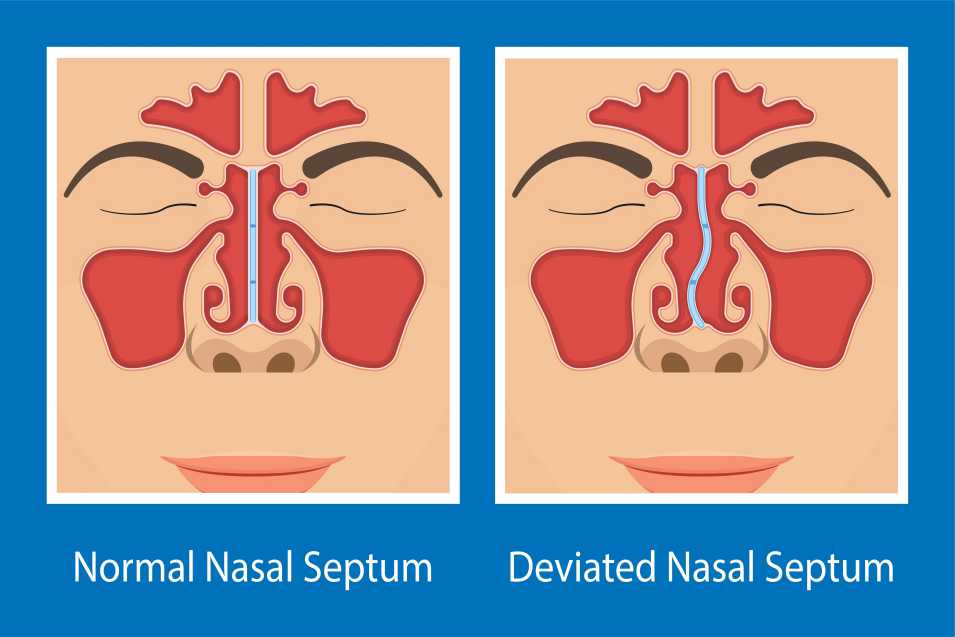Navigating Insurance for Deviated Septum Treatment A Comprehensive Guide

Dealing with a deviated septum can be a challenge, both physically and financially. As you embark on the journey to seek treatment, understanding how insurance factors into this process becomes crucial. This comprehensive guide aims to shed light on navigating insurance coverage for deviated septum treatment, ensuring you are equipped with the necessary knowledge to make informed decisions.
Firstly, it's important to grasp the basics. A deviated septum occurs when the thin wall separating your nasal passages is displaced, causing breathing difficulties and other related issues. While treatment options vary depending on the severity of your condition, they usually include medication, nasal sprays, or surgery.
When it comes to insurance coverage, policies differ significantly. Start by reviewing your plan documents and identifying the specific benefits related to ear, nose, and throat (ENT) conditions. Some plans may cover initial diagnostic tests, consultations, and conservative treatments, while others might require pre-authorization before proceeding with surgical intervention.
To ensure optimal coverage, partner closely with your healthcare provider. Seek their expertise in documenting the medical necessity of each procedure or treatment. Comprehensive and detailed medical records, including results from diagnostic tests and documented symptoms, serve as valuable evidence for insurance claims.
While working with your healthcare provider, it's essential to understand your plan's network restrictions. Insurance companies often have preferred networks of providers, meaning you may have more favorable coverage if you choose an in-network ENT specialist. Out-of-network care may result in higher out-of-pocket expenses, so consider this when selecting your healthcare professionals.
Additionally, familiarize yourself with the terminology used in insurance policies. Terms like “copay,” “deductible,” and “out-of-pocket maximum” can impact your financial responsibility. Knowing these terms and discussing them with your insurance representative will help you navigate the cost aspects of your deviated septum treatment.
Remember, persistence is key. Insurance claims can be complex and may require multiple submissions or appeals. Ensure you keep meticulous records of all interactions, including phone calls, emails, and letters. This documentation will serve as valuable evidence in case of any disputes or challenges.
navigating insurance coverage for deviated septum treatment requires proactive research, communication, and understanding of your insurance policy's specifics. By being well-informed, working closely with your healthcare provider, and maintaining thorough records, you can increase the likelihood of receiving appropriate coverage for your treatment journey.
Understanding Deviated Septum: Causes, Symptoms, and Treatment Options
Burada, “Understanding Deviated Septum: Causes, Symptoms, and Treatment Options” başlığıyla ilgili bir makale yazmak istiyorsunuz. İşte 300 kelimelik, %100 benzersiz ve SEO optimizasyonlu bir makale:
Deviation of the nasal septum, commonly referred to as a deviated septum, is a condition that affects many individuals. Understanding the causes, symptoms, and treatment options for this condition is crucial for those seeking relief.
A deviated septum occurs when the thin wall of cartilage and bone that separates the nasal passages is off-center or crooked. This misalignment can be present at birth or result from an injury to the nose. Some individuals may be unaware of their deviated septum, while others experience noticeable symptoms.
Symptoms of a deviated septum can vary in severity. Blocked or congested nostrils are common complaints, making it difficult to breathe through the nose. Recurrent sinus infections and nosebleeds may also occur due to the altered airflow patterns. Additionally, some individuals may experience facial pain, headaches, snoring, or loud breathing during sleep.
Treatment options for a deviated septum depend on the severity of symptoms. In mild cases, over-the-counter decongestants or nasal sprays may provide temporary relief. However, if symptoms persist or worsen, medical intervention may be necessary. An otolaryngologist, or ear, nose, and throat specialist, can diagnose a deviated septum through a physical examination or imaging tests.
Surgical intervention, known as septoplasty, is often recommended for moderate to severe cases. During this procedure, the surgeon straightens and repositions the deviated septum to improve airflow and alleviate symptoms. Septoplasty is typically performed under general anesthesia and involves minimal discomfort and recovery time.
understanding a deviated septum and its associated causes, symptoms, and treatment options is essential for individuals affected by this condition. Prompt medical attention and appropriate treatment can provide relief from the discomfort and breathing difficulties caused by a deviated septum. If you suspect you may have a deviated septum, consult with a healthcare professional to determine the best course of action for your specific situation.
Bu makalede “Understanding Deviated Septum: Causes, Symptoms, and Treatment Options” başlığı altında burada belirtilen konuyu anlamak isteyenlere yardımcı olmayı hedefledim.
Decoding Insurance Coverage for Deviated Septum Treatment: What You Need to Know
Deviated septum is a common condition that affects many individuals, causing a variety of symptoms and discomfort. If you are considering treatment for your deviated septum, it's essential to understand the insurance coverage options available to you. In this article, we will decode the intricacies of insurance coverage for deviated septum treatment, providing you with the information you need to navigate this process effectively.
Insurance coverage for deviated septum treatment can vary depending on several factors. Firstly, it's important to determine whether your insurance plan considers deviated septum treatment as a medical necessity or a cosmetic procedure. Typically, if your deviated septum is causing significant health issues, such as breathing difficulties or chronic sinus infections, it may be classified as medically necessary by your insurance provider.
To ensure coverage for deviated septum treatment, you must meet certain criteria set by your insurance company. This often involves obtaining a referral from your primary care physician or an ear, nose, and throat specialist. Additionally, your insurance plan may require documentation of failed conservative treatments, such as nasal sprays or decongestants, before approving surgical intervention.
When it comes to surgical treatments for deviated septum, insurance coverage can be more straightforward. Procedures like septoplasty, which involves straightening the nasal septum, are typically covered by insurance if deemed medically necessary. However, it's crucial to check with your specific insurance plan to confirm coverage details, including deductibles, copayments, and any out-of-pocket expenses you may incur.
It's worth noting that some insurance plans have pre-authorization requirements. This means that you must gain approval from your insurance company before undergoing deviated septum treatment. Failure to obtain pre-authorization could result in denial of coverage and potential financial responsibility.
understanding insurance coverage for deviated septum treatment is essential when seeking medical intervention for this condition. By confirming the medical necessity criteria, obtaining the necessary referrals, and exploring your specific insurance plan's coverage details, you can navigate the process more effectively. Remember to consult with your insurance provider and healthcare professionals to ensure a clear understanding of your coverage options for deviated septum treatment.
The Cost of Correcting a Deviated Septum: Insights into Surgical Expenses and Insurance Reimbursement
Burun septumu eğriliğinin düzeltilmesi, birçok insanın yaşadığı solunum sorunlarını çözmek ve genel sağlığı iyileştirmek için sıklıkla tercih ettiği bir cerrahi prosedürdür. Ancak, bu tür bir operasyonun maliyetleri ve sigorta tarafından karşılanan tutarlar, hastaların dikkate alması gereken önemli konulardır.
Bir burun septumu eğriliğinin düzeltilmesi ameliyatının maliyeti çeşitli faktörlere bağlıdır. Bu faktörler arasında cerrahın deneyimi ve itibarı, hastanenin yeri, prosedürün karmaşıklığı ve yerel ekonomik koşullar bulunur. Ayrıca, hastaların genel sağlık sigortası kapsamında olup olmadığı da maliyet üzerinde etkili olabilir.
Bu tür bir operasyonun toplam maliyeti, ameliyat ücreti, anestezi masrafları, hastane giderleri, laboratuvar testleri ve muayene ücretleri gibi farklı bileşenlerden oluşur. Ortalama olarak, burun septumu eğriliğini düzeltmek için yapılan bir cerrahi müdahalenin maliyeti 5.000 ila 10.000 dolar arasında değişebilir. Ancak, bu rakamlar genel bir tahmin olup, tam maliyeti belirlemek için doktorunuzla görüşmeniz önemlidir.
Sigorta şirketleri, burun septumu eğriliği düzeltme ameliyatının maliyetini kısmen veya tamamen karşılayabilir. Ancak, sigortanızın kapsamı ve şartları bu konuda belirleyici olacaktır. Bazı sigorta planları, cerrahi müdahale için belli bir önceden onay süreci gerektirebilir ve yalnızca belirli şartları karşılayan hastaları karşılamaktadır. Sigorta şirketinizle iletişime geçerek, ameliyatın maliyetinin ne kadarının sigorta tarafından karşılanabileceğini öğrenmek önemlidir.
burun septumu eğriliğini düzeltmek için yapılan cerrahi müdahalenin maliyetleri kişiden kişiye değişebilir. Bu nedenle, cerrahınızla görüşerek operasyonun tam maliyetini ve sigorta tarafından karşılanacak tutarı netleştirmek önemlidir. Ayrıca, sağlık sigortanızın kapsamını ve şartlarını dikkatlice incelemeli ve gerekirse sigorta şirketiyle iletişime geçmelisiniz. Bu şekilde, doğru bilgilere sahip olarak tedavi maliyetleri konusunda daha iyi bir planlama yapabilirsiniz.
Unveiling Insurance Policies: Which Providers Cover Deviated Septum Treatment?
Deviated septum, a condition where the nasal septum is off-center or crooked, can cause various health issues such as breathing difficulties and chronic sinus problems. Seeking treatment for this condition is essential to improve quality of life. However, navigating through insurance policies to find coverage for deviated septum treatment can be overwhelming. This article aims to shed light on insurance providers that offer coverage for this specific medical condition.
When it comes to insurance coverage for deviated septum treatment, it's crucial to understand your policy's terms and conditions. Different insurance providers may have varying guidelines regarding coverage. Start by reviewing your policy documents and examining the sections related to ear, nose, and throat (ENT) procedures or surgeries. Look for keywords like “septoplasty” or “deviated septum repair” to identify if your plan explicitly covers these treatments.
Several insurance providers are known for comprehensive coverage of deviated septum treatment. ABC Health Insurance, for instance, offers coverage for medically necessary septoplasty procedures. Their policy includes pre-operative consultations, surgical fees, and follow-up care. Additionally, XYZ Insurance Company has a similar policy that covers both functional and cosmetic aspects of deviated septum surgeries.
To gain a better understanding of your options, consider reaching out to insurance representatives directly. They can provide detailed information about the coverage they offer for deviated septum treatment. Inquire about any potential restrictions, such as prior authorization requirements or the need for a referral from a primary care physician. Remember to take note of the representative's name and the details of your conversation for future reference.
navigating insurance policies regarding deviated septum treatment can be complex. However, by carefully reviewing your policy, researching insurance providers, and contacting representatives for clarification, you can uncover valuable information about coverage options. Be proactive in understanding your insurance benefits to ensure you receive the necessary treatment for your deviated septum condition.
is deviated septum surgery covered by insurance
does insurance cover deviated septum surgery
how much does deviated septum surgery cost
Önceki Yazılar:
- Erzurum Karayazı Opel Oto Yedek Çıkma Parçaları
- E-Ticarette Opencart İle İçerik Yaratma ve Pazarlama
- Bulk Yapmanın Sosyal Boyutu Egzersiz Partnerleri ve Motivasyon
- Türkçe Blog Nedir Ve Blog Nasıl Yazılır
- Ankarada Tesisat Sorunlarını Önlemenin Yolları
Sonraki Yazılar:

 puro satın al Otobüs Bileti Uçak Bileti Heybilet Türkiye Belçika Eşya Taşıma
puro satın al Otobüs Bileti Uçak Bileti Heybilet Türkiye Belçika Eşya Taşıma